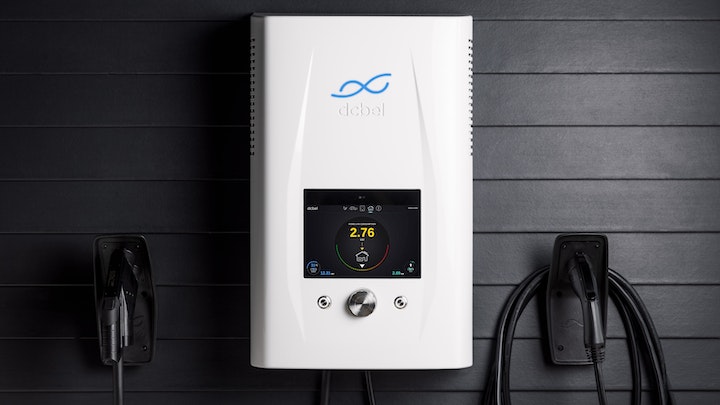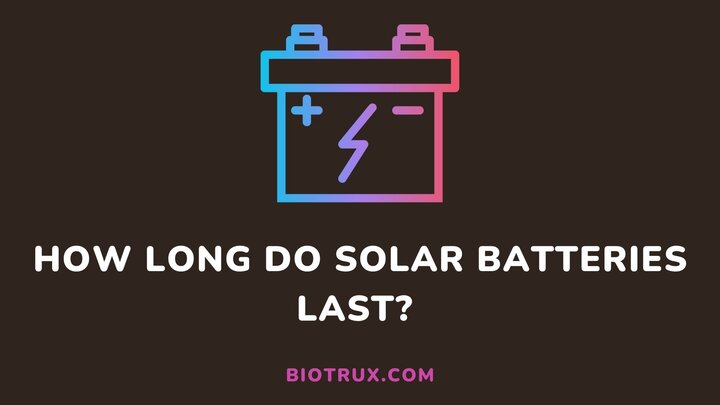Installing a solar source of electricity in your home, office, or any space often requires money upfront. A huge chunk of this money goes into the battery. Hence, it is not strange to be interested in knowing how long a solar battery lasts.
On average, a solar battery should last about 5 to 15 years regardless of type. However, a lot of factors are responsible for this variation. They include the type of battery, power rating, workload, and how often you use and maintain them.
This guide explains how long a solar battery should last and the factors that affect its lifespan. You will also learn about essential maintenance tips.
How Long Do Solar Batteries Last?

The entire solar system or energy source should last between 25 to 30 years or more. In between this duration, you may have to replace the battery within the system once or twice.
This is because most solar batteries today have a cycle count of between 300 and 5000 cycles. Hence, they should last up to 5 to 15 years or more depending on the battery type, capacity, and usage.
Factors That Determine the Longevity of Your Solar Battery
Aside from buying quality solar batteries, many factors contribute to how long they last. They include:
1. Battery usage
Batteries naturally deteriorate with or without usage. Solar batteries are not an exception; they last longer when engaged passively. On the other hand, when you engage the system actively, the batteries will gradually lose their power to hold a charge.
This is due to the numerous charging and discharging cycles that have occurred. One way you can maximize the longevity of a solar battery is to know its recommended depth of discharge, or DoD (usually in the manufacturer’s manual).
For example, if your battery’s power rating or capacity is 13.5 kWh and you have successfully used 10 kWh, the depth of discharge is now at 74%.
If a manufacturer states that it is best to recharge a solar battery before 75% DoD, you have to recharge this battery before its discharge level crosses 75%.
Pushing your solar battery beyond the recommended limit would significantly lessen its lifespan and result in the search for a replacement within a very short time.
2. Battery type
There are different types of batteries you can use for a solar system. Common options include lead-acid, saltwater, and lithium-ion batteries. Because lithium-ion batteries have no memory effect, they last the longest of the three.
They also offer the best storage capacity and higher DoD (up to 80%) without consequences. This means you can push the limit with this battery option in terms of stored energy–which is why they are pricey.
On the other hand, lead-acid batteries are budget-friendly but offer a lesser DoD. This battery’s recommended depth of discharge is usually between 30% and 50%. They also have the shortest lifespan among the three options above.
Saltwater batteries are the latest in the field of solar systems. These batteries store and discharge energy via salt, unlike others that prefer corrosive materials like sulfuric acid. Hence, they are extremely safe and easy to recycle.
Saltwater batteries last longer than lead-acid batteries and high a relatively high DoD (about 60% to 75%) similar to lithium-ion batteries.
Lastly, when choosing or buying a solar battery, take time to identify the warranty length offered by the manufacturer. This warranty is based on the number of cycles for each battery.
Hence, you can activate this return policy when a battery performs below the recommended estimation.
3. Battery environment
Batteries generally hate icy or hot temperatures. Hence, if you store your battery in a well-ventilated area, it works smoothly and lasts longer.
Under high temperatures, the electrochemical reaction within a solar battery will occur faster resulting in excessive wear and tear. In other words, the battery will only be of service for a very short time (shorter than the ideal lifespan).
Under low temperatures or extreme cold, the electrons won’t move at a normal pace. This means the battery will drain faster than it use to. Lead-acid batteries are more sensitive to temperature than saltwater and lithium-ion batteries.
For context, lead-acid batteries are better suited to temperatures between 40°F and 80°F. Lithium-ion batteries can perform at a temperature below 0°F and as high as 140°F. Nevertheless, a more temperate environment remains advisable.
Saltwater batteries, the latest addition, often perform best at temperatures above 23°F and below 104°F.
How to Know When a Solar Battery is Dead
1. Inspect the battery
The first step to knowing a dead solar battery is via inspection. Look out for symptoms such as:
- Broken terminal – usually results in short circuit
- Leakage
- Cracks or ruptures in the plastic component
- Discoloration
2. Take a voltage reading
A voltage reading is another reliable way to tell if a solar battery is dead. These are the various events that can occur after taking a reading and their implications:
- When a battery reads 0 volts, there is a high chance the battery is experiencing a short circuit.
- The battery probably has a dead cell when it cannot exceed 10.5 volts during a charging process.
- If the reading claims it is fully charged, but the voltage is 12.4 or below, such a battery is likely sulfated.
3. Load test the battery
You can also load-test your solar battery if you have a digital voltmeter. If not, kindly visit a local solar battery repair shop. The process requires you to fully charge your battery and let it sit for 12 hours passively.
Then, you can read the amount of residual charge released to know how the battery would likely perform under normal circumstances.
FAQs
What solar battery has the longest life?
Lithium-ion batteries have the longest lifespan. This is because they have no memory effect and give room for partial charges.
What causes solar batteries to drain quickly?
A solar battery may drain due to improper settings, recurrent charging, and overcharging (leaving it at 100% for too long).
It may also mean the battery is heading toward the end of its cycle count.
What are the 2 main disadvantages of solar energy?
Installing solar energy is relatively expensive and primarily dependent on sunlight.
However, headways keep surfacing regarding the pricey nature of solar setup as the industry expands.
Conclusion
Solar batteries are expected to last between 5 and 15 years within a solar system. This can depend more on the quality you choose and how much usage the battery undergoes.
Suppose you also take proper care of your battery and strictly follow instructions from the manufacturer. In that case, you may not need to replace a lithium-ion, lead-acid, or saltwater battery more than once.
Nevertheless, lithium-ion options are the strongest in almost all ramifications for solar batteries. To choose other battery options, you must consider many factors or consult a solar panel engineer.
I hope you found this guide helpful. For more relevant guides on lithium batteries, check out biotrux.
Thanks for reading.

